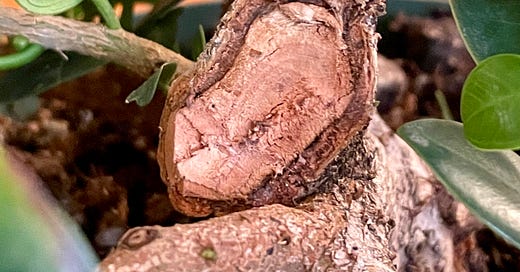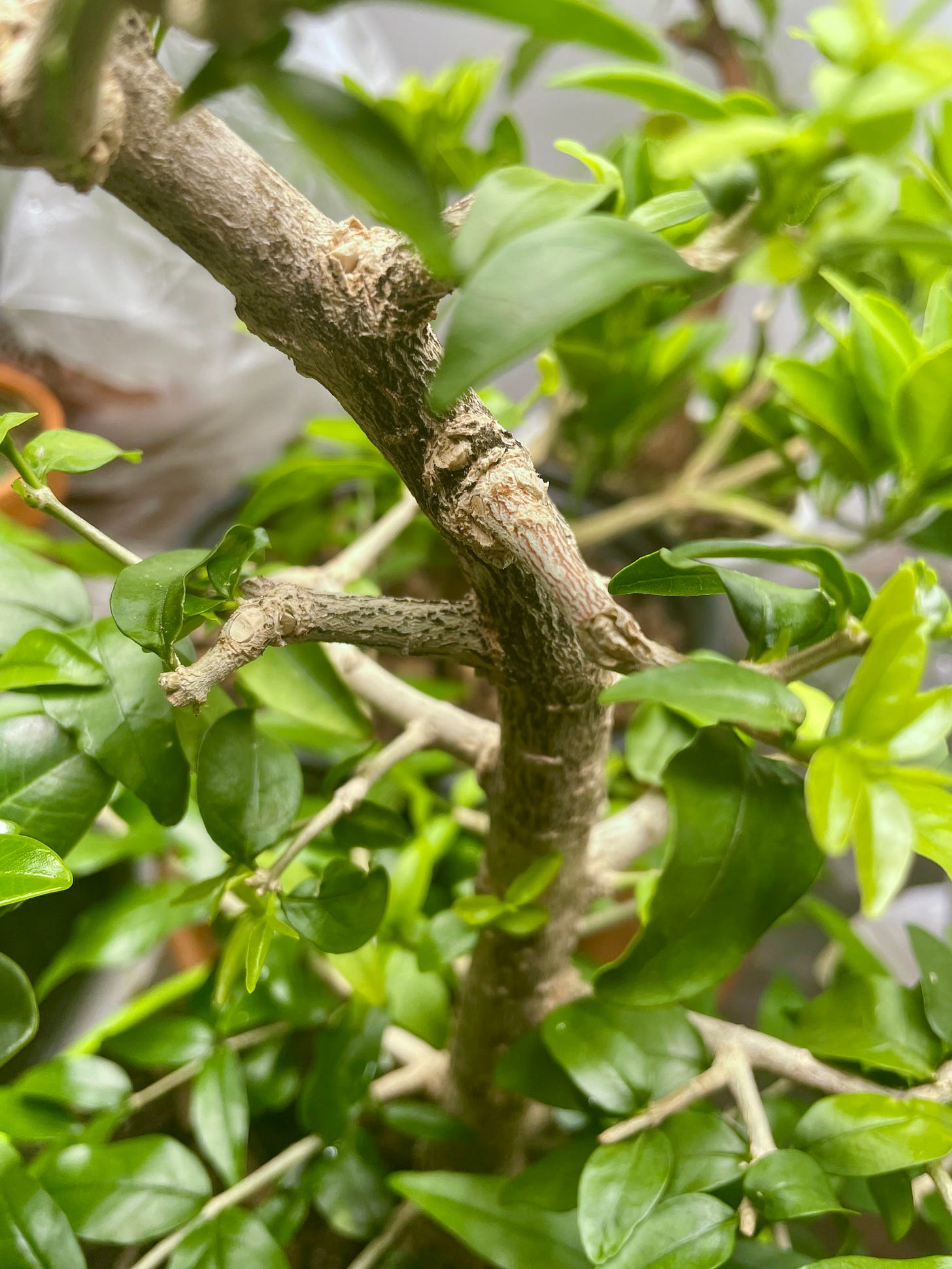For much of a bonsai’s life, it looks like a mess. Or at least not much like a bonsai that’s put on display. A tree’s health always comes first, and that requires vigorous growth. Trimming foliage to get the tree ready for display puts it in a weakened state that isn’t sustainable for long. If you keep it there by continuously trimming new growth, the tree will exhaust itself and die.
Instead, bonsai artists let their trees grow wild for months or years before pruning them back, and usually with a specific purpose in mind. These spans of growth in between usually involve awkward stages.
The water jasmine above is in one of them. I want to thicken up the lower limbs, which are thin and spindly compared to the beefy branches higher up the trunk. The only way to do so is to let those limbs extend outward while I keep the upper foliage pruned back hard. It’s looked like this for the past month and will continue in this fashion for several more, or until it physically outgrows the space, whichever comes first.
When I look at the water jasmine in parts rather than as a whole, I’m pleased. The main branches are set and they’re beginning to ramify well. They’re spaced well to give the tree’s flowers ample room to bloom.
Last week I got surgery on a loose shoulder. There’s a ring of meat and cartilage around the shoulder socket called the labrum, and after five dislocations, mine was torn from the bone. A doctor reattached it with seven plug-shaped anchors, and as new tissue grows around the injury, the joint should recover to a certified refurbished condition.
Eventually. Full healing takes a year, and for now I too am in an awkward state, stuck in a shoulder sling day and night for another two and a half weeks. Everything is harder, including sleeping. Dictation programs work less well than you think they do. Still, this is good news. I was originally scheduled for this procedure back in May and I’ve been on quasi-medical leave since then. I am ready for this awkward stage to end.
Two of my figs are sweating inside plastic bags. It doesn’t get more awkward than that. The one pictured here is a small cutting intended for a forest planting. I’m hoping the increased humidity helps it push more buds to grow a thicker trunk. My larger fig has been growing under plastic for a while now. Under humid tropical conditions, this species produces aerial roots that wind their way to the forest floor. Once they’ve anchored themselves into the soil I’ll remove the plastic and trim the dead and unwanted growth. What remains should look more banyan-like.
It’s coming together—in different ways in different places, even on the same tree. So what if those elements don’t all come together at the same time? A bonsai may look display-ready for a few days a year. In-between awkward stages are fine. They can’t be rushed.
Tree reading
Is it really “green energy” if you’re cutting down irreplaceable old-growth forest to make wood pellets? [New York Times]
Hunting for huitlacoche in a corn maze. [Tiktok]






